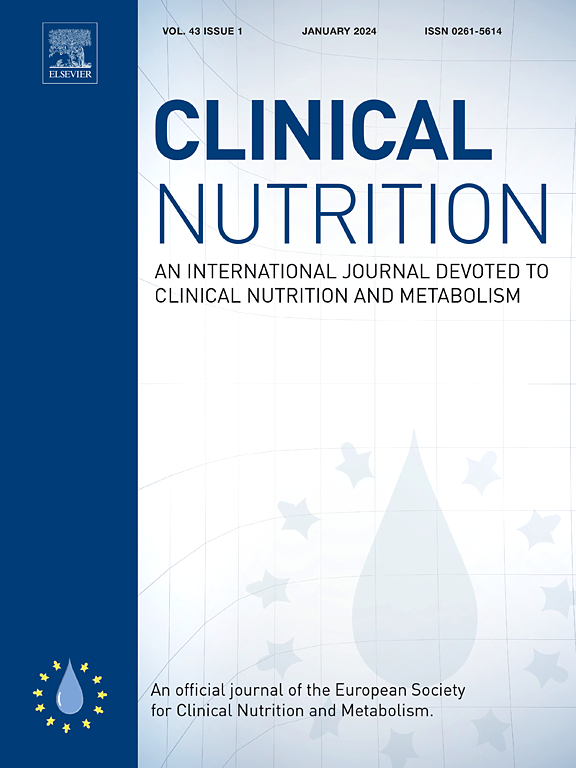Thoracic muscle mass predicts survival among patients with locally advanced esophageal cancer
IF 6.6
2区 医学
Q1 NUTRITION & DIETETICS
引用次数: 0
Abstract
Background & aims
There is limited literature evaluating muscle mass at the fourth thoracic (T4) vertebrae using computed tomography (CT) images, with no studies evaluating T4 muscle mass in esophageal cancer.
Methods
In this retrospective cohort study, body composition analysis using skeletal muscle index (SMI) was conducted at T4 and L3. Overall survival (OS) and disease-free survival (DFS) were evaluated using Kaplan–Meier curves and log-rank tests, as well as multivariable cox proportional hazards models. Correlation analysis and evaluation of fixed and proportional bias was conducted. Low muscle mass was defined by the lowest quartile of the SMI distribution from the post-neoadjuvant CT: <30.4 cm2/m2 (females) and <42.2 cm2/m2 (males) for L3, and <35.4 cm2/m2 (females) and <52.6 cm2/m2 (males) for T4.
Results
Of the 120 patients included, eight (8.2 %) patients had T4-low muscle mass at the staging CT which increased to 25 (25.8 %) at the post-neoadjuvant CT. On multivariable analysis, T4-low muscle mass was associated with worse overall survival (OS) (HR 2.51, 95 % CI 1.47–4.29, p = 0.001) and disease-free survival (DFS) (HR 1.88, 95 % CI 1.09–3.24, p = 0.022). T4-SMI was higher than L3-SMI at both the staging (65.4 ± 13.6 cm2/m2 versus 51.1 ± 10.0 cm2/m2, p < 0.001) and post-neoadjuvant (57.8 ± 12.7 cm2/m2 versus 45.8 ± 9.3 cm2/m2, p < 0.001) CT scans. The correlation (R-value) between T4 and L3 SMI was greater than 0.6 (0.62–0.81) for all staging intervals.
Conclusion
Our findings support using low muscle mass at T4 as a prognostic indicator for OS and DFS. These findings can be extrapolated to tumor groups, such as lung cancer, where L3-low muscle mass status is not routinely available.
求助全文
约1分钟内获得全文
求助全文
来源期刊

Clinical nutrition
医学-营养学
CiteScore
14.10
自引率
6.30%
发文量
356
审稿时长
28 days
期刊介绍:
Clinical Nutrition, the official journal of ESPEN, The European Society for Clinical Nutrition and Metabolism, is an international journal providing essential scientific information on nutritional and metabolic care and the relationship between nutrition and disease both in the setting of basic science and clinical practice. Published bi-monthly, each issue combines original articles and reviews providing an invaluable reference for any specialist concerned with these fields.
 求助内容:
求助内容: 应助结果提醒方式:
应助结果提醒方式:


